
15 minute read
Global meets local
Stacey Jones introduces us to the Bay’s new wave of food creatives, representing a range of cultures, tastes and techniques, who are dedicated to dishing up your favourite meals in the Bay.
PHOTOS SUPPLIED
Advertisement
Afew months back, I was reading an article in The Guardian by one of my food heroes, Yotam Ottolenghi. He was talking about the importance of multiculturalism in the kitchen to create a diverse and unique dining scene. “Just like other cultural phenomena, food is enriched by interaction between different cultures,” he explained, as I nodded enthusiastically into my morning cuppa.
Just a few days later, I organised a “Ones to Watch” breakfast for our leading local chef talent as part of the Flavours of Plenty Festival. Over a delicious breakfast at Clarence Hotel, William Dang from Lantern, Ella McGill from Umami Fusion Kitchen, Ian Harrison from Sugo, Neil Sapitula from Solera, Jordan Baudeche from The Trading Post, and Perin Yates from Clarence Bistro shared their unique stories behind the food they create.
And you know what struck me? What a melting pot it was. Vietnam, Philippines, France, UK, South Africa and Aotearoa − their roots collectively spanned four continents. Yotam would be proud. It is this cultural diversity that I believe has brought some really exciting and unique dining options to the Bay in recent times.
Take Neil Sapitula of Solera as an example, who first entered a professional kitchen at the age of 15. This was not any old kitchen, it was Le Petit Soufflé, the best restaurant at the time in the Philippines. Neil’s progressive style combines hearth cooking with Asian influences and gives rise to some truly delicious flavours and techniques. Hold onto your eyebrows as he flambés cured wagyu beef fat onto the plumpest of oysters in front of you at the chef’s pass, served with sweet sambal and pine nuts.
Another one to watch is Vietnamese-born William Dang of Lantern, who cut his teeth in some of Auckland's most reputable establishments, including Culprit and Mekong Baby. He relocated to the Bay to take up the role as head chef at Izakai and is now making waves at Lantern in Pāpāmoa. His version of prawn toast inspired a Stuff review to lead with the headline “The Best Thing I Have Eaten in New Zealand”. ’Nuff said.
Never have we had so many high-quality chefs in our region, cooking food from each and every corner of the globe. And New Zealand is offering them a whole new set of ingredients to play with. Chef Jordan Baudeche of The Trading Post trained in France in Michelin-starred restaurants. His style of cooking is focused on unpretentious good quality and locally sourced products such as Mystery Valley Olive Oil and Te Puke Truffles. He recently launched a Matariki tasting menu featuring horopito gnocchi and oysters with kawakawa oil, all underpinned by French cooking techniques.
Another great example of global meets local is chef Ella McGill of Umami Fusion Kitchen. A passionate hunter and forager with Le Cordon Bleu training, she blends Asian fusion with fresh New Zealand produce at her Pyes Pa neighbourhood eatery. The menu is constantly evolving based on what is available.
So, with the borders reopening in July, my mouth is watering at the prospect of a new wave of passionate chefs keen to bring their culinary creativity to our shores. It would seem that my old friend Ottolenghi is right − the most important ingredient in the kitchen is cultural diversity.
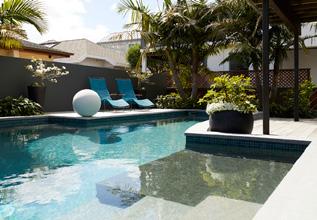
FLAVOUR FUSION
Stacey Jones grilled four of the chefs from Flavours of Plenty Festival’s “Ones To Watch” on their inspiration for entering the world of food, then convinced them to share a simple, seasonal and locally inspired recipe, so you can bring some of their magic into your home kitchen. Bon appetit!
PHOTOS SUPPLIED
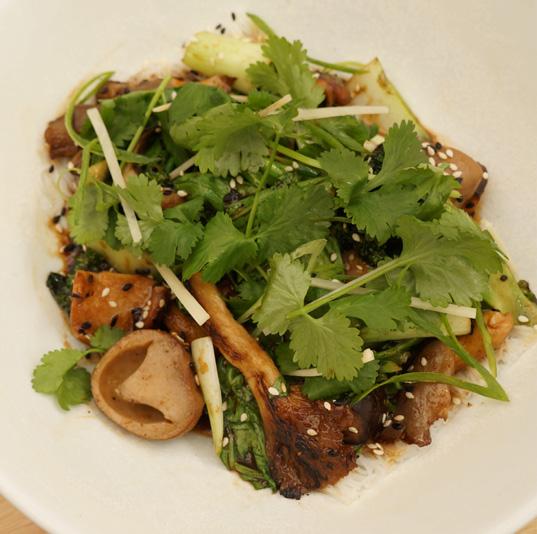
WILLIAM DANG

Head chef at Lantern.
What’s your style of cooking?
Asian fusion with a modern technique.
What made you want to become a chef?
I’ve had a great connection with food since I was very young. I always helped my mum to prepare meals for the family. When I got older I liked discovering new places to eat. I was a firm foodie. I then discovered that being in the kitchen was the quickest way for me to make money to pay my tuition and living costs.
What local ingredients do you like to use?
Definitely Mārama’s Oyster Mushrooms as they have such an earthy flavour. Tasting it alongside normal oyster mushroom, you will notice a huge difference.
What’s your fondest food memory?
When I was travelling in Singapore and had a chance to taste the pork char siu at a Michelin restaurant, the flavour stuck in my mind for a long time, and that's how I created the pork char siu on Lantern's menu.
If you could eat in any restaurant in the world, where would it be?
Sunda and Aru, chef Khanh Nguyen’s restaurants in Melbourne. His creativity is insane.
What experience did you have before you started The Trading Post?
I spent most of my career in Auckland in several reputable restaurants like Culprit, Mekong Baby and One Tree Grill. I was lucky enough to work in these restaurants with great chefs who helped to shape my culinary knowledge. Then I moved to Tauranga to work in Izakai for two years, before recently moving to Lantern.
What’s your “death row dinner”?
I love pho (Vietnamese beef noodle soup); however, I would love to have it only at a pho restaurant in Saigon, Vietnam that I love.
Mushroom Sauce with Veges
INGREDIENTS
20g ginger, minced 40g shiitake mushroom 40g oyster mushroom 60g asparagus or broccolini 150ml ketchup 200ml soy sauce 200ml sweet dark soy sauce 100ml sesame oil 100ml sweet chilli 200ml water 1 tbsp black pepper, ground 2 tbsp onion powder 4 tbsp ginger powder 60g Shanghai bok choy
METHOD
Heat up a pan to smoking hot, oil it, and add minced ginger to fry for a few seconds, then add equal amounts of shiitake mushroom, oyster mushroom, some green veges like asparagus or broccolini, and cook for 30 seconds. Then add the rest of the sauces and dry ingredients, and add bok choy for last 10 seconds (because it’s cooked really fast and we want to keep its crunchiness). At Lantern, we serve this on top of our woven vermicelli, so all the sauce will absorb into the vermicelli. In Asian cooking, we don’t measure how much sauce we put in to it, we keep going and keep tasting to our best liking.
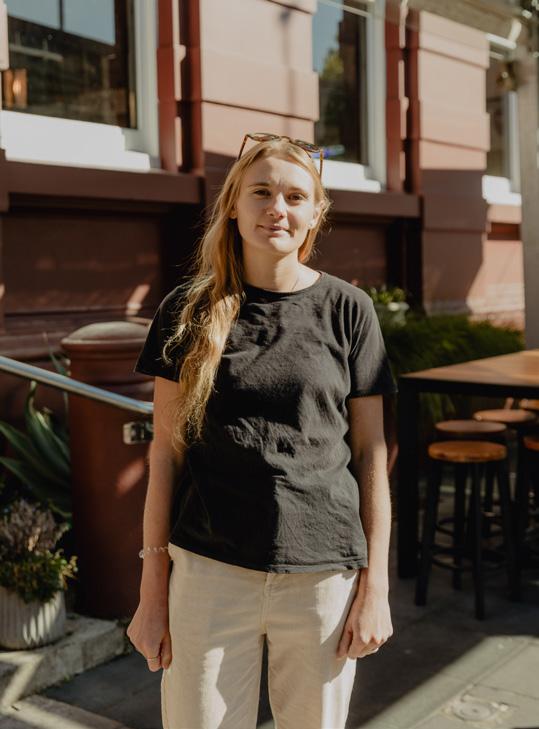
ELLA MCGILL

Head chef at Umami Fusion Kitchen.
What is your style of cooking?
For me, a meal is a shared experience. It’s about gathering with family and friends to share great food and great stories. My focus is on balancing the flavours of cuisine from around the world with the fresh produce of New Zealand, which is the essence of fusion cooking.
What made you want to become a chef?
Cooking was part of my upbringing. My mum ran a catering business, and as soon as I was old enough, I was helping her to prepare and serve food. My mother attended Le Cordon Bleu school in Auckland and it felt like a natural step to enrol at Le Cordon Bleu when it reopened in Wellington.
What local ingredients do you like to use?
I try to use local and seasonal ingredients whenever possible. We use locally grown vegetables and produce such as avocados, limes, herbs and edible flowers. Our menu is continually evolving as produce becomes available. Many of our suppliers are also our customers and will bring their families in to share meals created from produce they have grown and sourced themselves.
What is your fondest food memory?
I went out with a work team to hunt and shoot my first deer. It was a privilege to be part of the whole process from start to finish, creating favourite dishes from an animal that I had taken from the bush myself.
If you could eat at any restaurant in the world, where would you go?
Rather than an individual restaurant, I would like to visit Japan and experience their cuisine. My ideal would be to travel the country on a culinary journey, sampling local specialities in each region. My encounters with Japanese cuisine have shown me that they value fresh produce and subtle flavours, which is very much in keeping with my own approach. I would like to learn more about their cooking techniques (and the skiing would be good, too!)
What experience did you have before you started at Umami?
I grew up in National Park Village near Ruapehu, so have always been around the bush and the snow. After finishing high school, I attended Le Cordon Bleu cooking school in Wellington, where I learned the fundamental skills of classic French cuisine. After finishing there, I became the chef for a New Zealand ski team training in Switzerland. On my return to New Zealand, I was employed at Poronui Lodge, which is a luxury hunting and fishing lodge in the Taharua Valley. I worked as a personal chef, cooking for the guests at the Lodge. After leaving Poronui, I moved to the Bay of Plenty and started at Umami.
What is your “death row dinner”?
My ideal dinner is one that I would source and prepare myself. Seafood is my favourite food. I would start with fish hand-caught from the ocean, which I would turn into sashimi while still fresh. Oysters harvested, shucked and eaten fresh with vinegar and tabasco. Pan-fried gurnard with a salad foraged from the garden. All accompanied by a nice bottle of Spanish red.
Japanese-Style Venison Carpaccio
SERVES FOUR PEOPLE ON A SHARED TASTING PLATTER.
INGREDIENTS
200g venison backstrap 1 tbsp olive oil Salt and pepper
Pickled wasabi daikon 1 cup water 1 cup white sugar 1 cup white vinegar 1 daikon radish 1 teaspoon toasted sesame seeds 1 teaspoon sesame oil ½ teaspoon wasabi powder
Ponzu dressing 2 tbsp sesame oil 2 tbsp soy sauce 2 tbsp mirin 2 tbsp rice wine vinegar Fresh herbs to serve
METHOD
Venison: Rub surface of meat with olive oil and season with salt and pepper to taste. Preheat frying pan to a high heat. Sear each side of the venison (approximately 45 seconds). Set aside to cool. When cool, wrap meat tightly in cling film. Chill in freezer until firm but not frozen (approximately two hours).
Pickled wasabi daikon: Boil water, sugar and white vinegar in small saucepan until sugar has dissolved. Set aside to cool and pour into bowl. Peel daikon and slice into matchstickstyle pieces. Submerge daikon in liquid and refrigerate for approximately two hours (until venison is ready to be removed from the freezer). Drain liquid from daikon. Mix daikon with sesame seeds, sesame oil and wasabi powder.
Ponzu dressing: Mix all ingredients together in a small bowl.
Assembly: Finely slice venison. Spread pickled daikon across serving plate. Lay sliced venison across bed of daikon. Drizzle with ponzu dressing. Garnish with fresh herbs.

JORDAN BAUDECHE
Head chef at The Trading Post.
What’s your style of cooking?
Born and trained in France, I use French cooking techniques as my foundation, but my style of cooking is unpretentious and focussed on good-quality and locally sourced products.
What made you want to become a chef?
From a young age, I loved spending time in the kitchen and sharing long meals with my family. I always wanted to be a chef so I could cook all the time and travel. I never wanted to work in an office environment.
What local ingredients do you like to use?
There is an abundance of quality ingredients produced around the restaurant, like Mystery Valley Olive Oil, Te Puke Truffles, Mama Kali’s Microgreens, and Shortridge Eggs. We are also growing most of our own herbs and recently started a vege garden.
What’s your fondest food memory?
Helping my grandparents bake hundreds of “oreillettes Provençales” every Christmas, to be shared by the whole family. Those rectangular sheets of deep-fried dough are flavoured with orange blossom water and covered in icing sugar.
If you could eat in any restaurant in the world, where would it be?
Restaurant DOM from Alex Atala, Brazil. Or Amisfield Restaurant in Queenstown.
What experience did you have before you started The Trading Post ?
In France I worked in a variety of restaurants, from Michelin stars to bistros. Before opening The Trading Post, I was Sous chef at USSCO in Gisborne.
What’s your “death row dinner”?
First thing that comes to my mind is “Tête de Veau sauce gribiche,” which is a classic bistro dish made with a calf’s head. It is slowly cooked in a broth flavoured with aromatics and vegetables, accompanied by gribiche sauce with hard-boiled eggs and herbs.
Honey Glazed Carrots with Labneh and Za’atar
SERVES 4 / READY IN 45 MINUTES / GF V
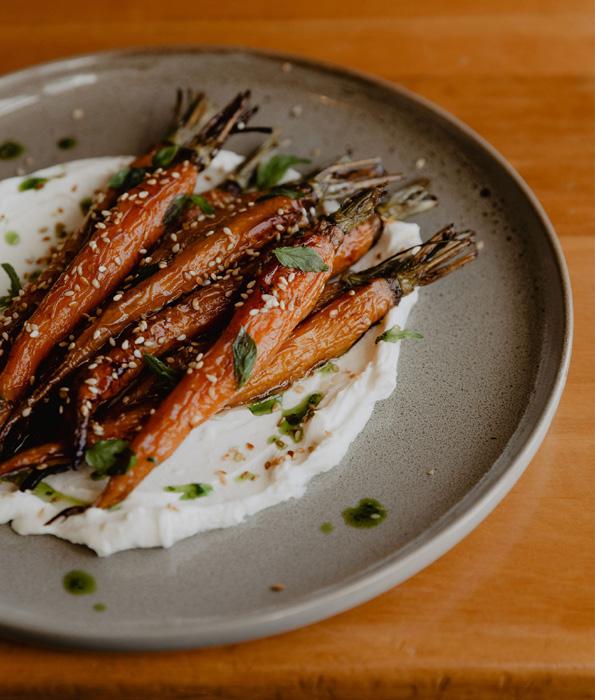
INGREDIENTS
Labneh 300g good-quality Greek yoghurt 1 teaspoon sea salt
Za’atar 1 tbsp thyme, crushed 1 tbsp ground cumin 1 tbsp ground coriander 1 tbsp toasted sesame seeds 1 tbsp sumac 1 tsp sea salt
Carrots 500g baby carrots, or table carrots (halve lengthwise if large) 2 cups warm water 2 tbsp quality honey (we use Manawa wildflower honey) 1 tbsp za’atar (bought or see recipe above) 1 tbsp extra-virgin olive oil 1 tbsp butter 1 tsp sea salt
METHOD
Labneh: In a mixing bowl, combine the salt in the yoghurt. Drain the labneh overnight in a cheesecloth or a tea towel, with some weight over it. The next day, scoop out the labneh and store in an airtight container in the fridge for up to one week.
Carrots: Preheat the oven to 180˚C. Put the carrots in an ovenproof pan, add all the other ingredients and toss, then cook in the oven for 25 minutes or until tender and caramelised. To serve, spread the labneh on your dish, add the carrots on top, sprinkle with more za’atar, and drizzle any remaining cooking juice from the carrots. This dish is fantastic served with flatbread or to accompany a confit lamb shoulder.

NEIL SAPITULA
Head chef at Solera.
What's your style of cooking?
I don’t have a specific style, but I call my cooking progressive with an influence of pre-industrial cooking.
What made you want to become a chef?
I was 15 years old when I first entered a professional kitchen. That was in Le Souffle, the best restaurant at that time in the Philippines. It was an open kitchen restaurant with very classic French fine dining. At that time I felt comfortable being inside the kitchen and it was very clear in my mind that I wanted to work in a kitchen.
What local ingredients do you like to use?
Kawakawa and kawakawa berries. We used to grill and pickle the berries and made oil from the leaves or turned it into vinaigrette. It gives a peppery flavour and the berries are sweet.
What's your fondest food memory?
My Nana's tortang talong (fried eggplant with egg) served with banana ketchup. It always brings back childhood memories.
If you could eat in any restaurant in the world, where would it be?
Asador Etxebarri in Basque Country, Spain, and Ekstedt in Stockholm, Sweden.
What experience did you have before you started at Solera?
I’ve been in the industry for about 12 years now. I worked in Asia at Vask Gallery and VEA, and in Auckland, at Nanam, Soho and Cocoro.
What’s your “death row dinner”?
Double Big Mac! And KFC Original Fried Chicken (LOL).
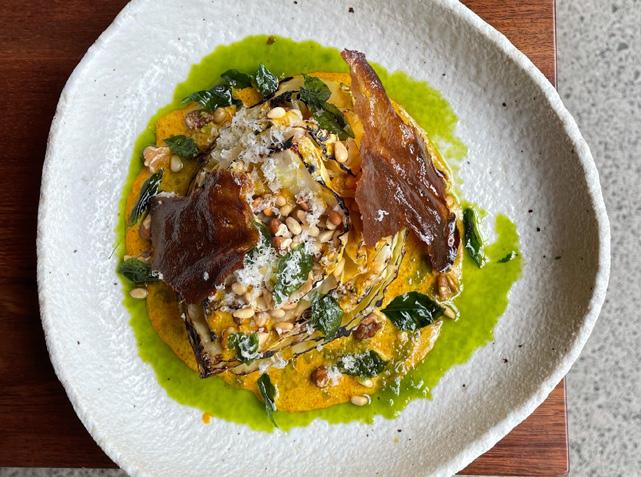
Woodfire Roasted Cabbage with Kawakawa Curry sauce
Kawakawa curry paste
300g shallots, peeled 100 garlic cloves, peeled 25g turmeric powder 25g curry powder 100ml canola oil 300g kawakawa leaves 100g galangal 50g ginger 150g lemongrass 10g cinnamon 5g star anise 20g coriander seeds 5g cardamom 50g coriander leaves
Roasted cabbage 1 cabbage 30ml canola oil 2g salt 1 lemon
Curry sauce 200g curry paste 30ml canola oil 500ml coconut milk 1L coconut cream 300ml tamarind 300g palm sugar
Whitebait and oyster mushroom crisp 100g curry paste 500g oyster mushrooms 500g whitebait 10g curry powder 10g turmeric powder 1 lemon, zested 20ml lemon juice 250ml water
METHOD
Curry paste: Preheat the oven to 160˚C. Toss shallots with turmeric powder and curry powder, then place on oven tray and coat with oil. Roast in oven for 30 minutes. Blend the remaining ingredients into a paste, add the roasted shallots and garlic, and blend again until smooth. Sauté the curry paste in a pan for about 45 minutes to one hour, deglazing with 15ml of water every 15 minutes or so. Cooked curry paste will keep for two months in the fridge.
Roasted cabbage: Score the core of the cabbage, then season it with oil, salt and lemon. Cover with foil and bake in the oven for 1 hour at 160˚C. After baking, let rest for 30 minutes, then cut into quarters.
Curry sauce: Sauté curry paste with oil. Add coconut milk and cream, tamarind and palm sugar and cook for 30 minutes on low heat. Put in a blender for 3 minutes, then strain.
Whitebait and oyster mushroom crisp: Sauté curry paste for 5-10 minutes. Add the oyster mushrooms and cook for 10-15 minutes or until there is no more moisture from the mushrooms. Add whitebait and other ingredients. Cook for 5 minutes. Blend the mixture to a smooth paste consistency. Spread paste on baking paper, preheat the oven to 70˚C, and bake for about 1 hour until dehydrated.










